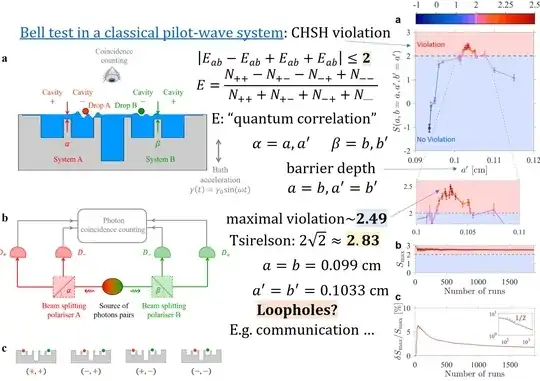Recent fluid-mechanical experiments by the groups of Couder in Paris and Bush at MIT, mimic a surprisingly wide range of quantum effects. The essential ingredient of these fluid-mechanical systems is a background or pilot-wave that guides the droplets.
Now, surprisingly, a simple analysis of a Bell-type experiment shows that, in the presence of a background field, one of the premises of the Bell inequality, namely measurement independence (MI), is violated. See the paper "No-Go Theorems Face Background-Based Theories for Quantum Mechanics" (available on arxiv). Therefore such classical droplet experiments could violate a Bell inequality. More importantly, if this analysis is correct, background-based hidden-variable theories are admissible, even if they are local (in the sense of ‘involving only (sub)luminal interactions’) and even if they are compatible with free will.
My question: to me the analysis seems fully sound, but maybe there is still an unphysical hypothesis that slipped in ?
